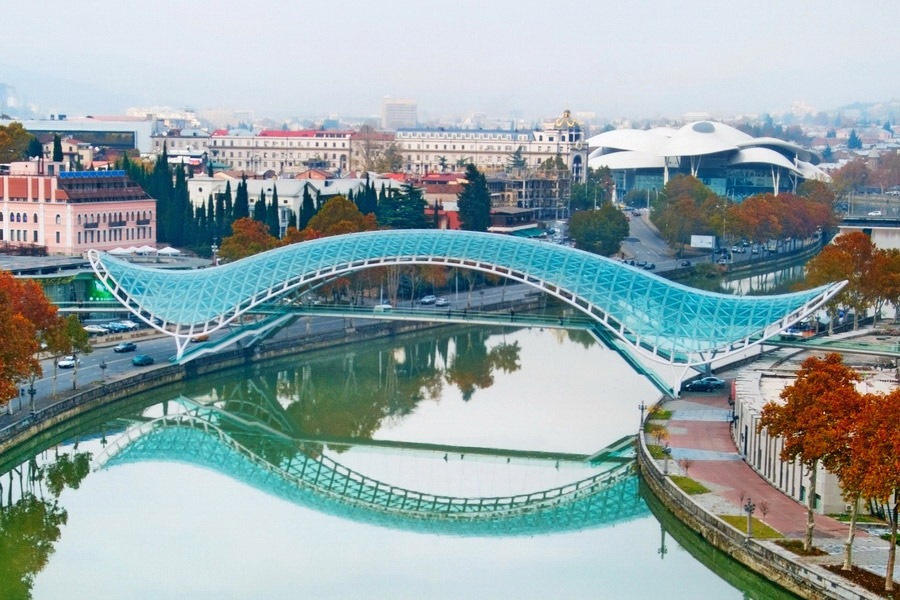Bridge of Peace, Tbilisi

We have to build bridges of peace instead of building walls of wars.
Widad Akrawi
The Bridge of Peace in Tbilisi merges modern life with the ancient past and symbolizes the nation’s peaceful transaction from post-Soviet struggles to a contemporary nation brimming with life and peace.
The pedestrian walkway, which spans the Kura River to connect Erekle II Street with Rike Park, was designed by award-winning Italian architect Michele De Lucchi. Construction on the bridge, which began in 2009 and ended in 2010, cost a total of 12.5 million GEL, or roughly 7.5 million USD. The bridge was actually built in Italy and shipped to Tbilisi via numerous flatbed trucks, where it was then pieced tougher. Bridge of Peace opened to the public on May 6th, the anniversary of the execution of St. George, Georgia’s chief saint.
Today, a walk across the Bridge of Peace is considered one of the top things to do in Tbilisi, yet its construction stoked many controversies. Some residents believed that the modern glass structure in the capital’s historic district would be out of place, while others argued that the new bridge, a sample of modern architecture, would add novelty to Old Tbilisi. Ultimately, the city needed a pedestrian overpass to connect the two riverbanks, and plans for its construction were undertaken despite many protests.
The bridge’s distinctive, curvy design is supported by steel columns and likened to many objects, among them a marine mammal. Spanning 156 meters (490 ft), its steel-and- glass canopy is decorated with over 10 thousand LED bulbs. Before sunset, the blinking lights are switched on to entertain onlookers with a variety of programs, including a Morse code message that signals the periodic table of the elements, a symbolic nod towards life and international peace.
The bridge is a perfect starting point for tourists, who after crossing into Rike Park can take a fun cable car ride up to Narikala Fortress and the statue of Kartlis Deda, Mother of Georgia. From there, a stroll through Old Tbilisi can lead you to Jumah Mosque, Tbilisi’s Bridge of Love, Legvtakhevi Waterfall, Tbilisi Botanical Garden and more.
Bridge of Peace in Tbilisi has been counted among the 25 most interesting bridges in the world, yet its significance to Georgians strikes a personal chord. Regardless of each individual’s feelings toward the cutting-edge symbol, it represents a period of reform that marked a turning point in Georgia.
